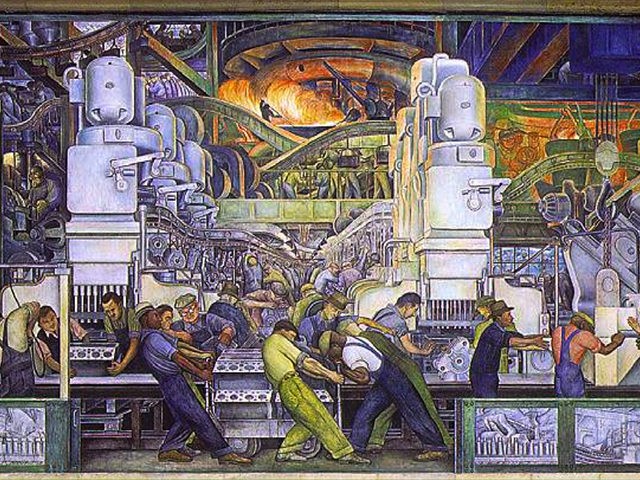This Is the Greatest Manufacturing Jobs Boom in Twenty Years

CC
The American manufacturing renaissance is still defying expectations.
Over the last 12 months, manufacturers have added 224,000 jobs. That’s the biggest annual gain since 1998, according to Wall Street economist Joe LaVorgna. Since the 2016 election, the economy has added 263,000 manufacturing jobs. Last month, 31,000 new manufacturing jobs came online.
It wasn’t supposed to be this way, according to the Very Wise People. Donald Trump’s promises to bring back manufacturing jobs was widely derided as impossible, and his supporters were mocked as suckers.
“Trump won’t be able to ‘make American great again’ by bringing back production jobs,” Mark Muro, a senior fellow at the Brookings Institution wrote.
“What happens when people realize they’ve been taken?” Wharton emeritus professor of management Stephen J. Kobrin asked. “When people realize that he can’t bring back jobs and that they are not better off than they were two years ago, how does he use it–who does he blame it on?”
“Manufacturing jobs are never coming back,” Ben Casselman of FiveThirtyEight declared in the summer of 2016.
Instead of focusing on reviving the manufacturing sector, politicians should focus on managing its decline, the Very Wise People insisted.
“[R]ather than play to that anger [over lost manufacturing jobs], candidates ought to be talking about ways to ensure that the service sector can manufacturing’s former role as a provider of dependeable decent-paying jobs,” Casselman wrote.
Why was it supposed to be impossible to revive manufacturing? Globalization couldn’t be reversed. Automation would make human manufacturing jobs redundant. Trump had offered “few specifics” about how he would change policies to benefit workers.
“The larger problem for Trump and his supporters is that there is very little reason to think that any set of policies could meaningfully reverse the long-term decline in U.S. manufacturing jobs,” Casselman wrote shortly after the election.
So how wrong were the Very Wise? Just about as wrong as they could possibly be.
“The manufacturing sector is adding jobs at a faster pace than the rest of the economy, which hasn’t happened much over the past half-century,” Justin Fox writes at BloombergView.
It’s clear that a number of the Trump policies and Trump-related phenomenon are helping:
- The massive tax cut on businesses appears to be helping a lot and may have even started helping before it was passed.
- The perception that the regulatory environment will no longer be a drag on businesses, particularly manufacturing businesses.
- The revival of domestic oil and gas, another key Trump campaign promise, contributes to manufacturing jobs.
- Consumers sentiment and business optimism are at or near decades-long record highs.
- Manufacturers know Trump has their back and will make efforts to aid their export efforts and fend off cheap imports.
- Foreign manufacturers are moving jobs into the U.S. in hopes of avoiding tariffs they fear are coming.
Of course, Trump is far from a place where he can fly a “mission accomplished” banner over the U.S. economy. As Alan Tonelson points out, wages remain flat for manufacturing. And manufacturing employment is still 8.24 percent below its pre-recession peak of 13.7 million jobs.
There’s more to do. But the revival of manufacturing does not look as challenging today as it did a few years ago.
via Breitbart News
Enjoy this article? Read the full version at the authors website: http://www.breitbart.com
